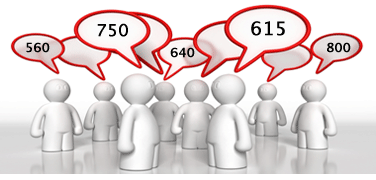

- Credit 101
- Teaching Tools
- Scores
- Life Stages
- Credit Mishaps
- Understanding Different Bankruptcy Chapters
- Your Credit Report After a Bankruptcy
- Understanding Judgments
- Inaccuracies on Your Credit Report
- Disputing Credit Report Errors
- Understanding Foreclosure
- The Foreclosure Process & What To Do Afterwards
- Understanding Identity Theft
- In the event of: The Death of a Spouse
- Rebuilding Your Credit
- Choosing a Reputable Credit Counselor
- Avoid the Downside of Credit Mismanagement
- What is a Credit Freeze
- Worksheets & Letters
- 6 Steps to Creating a Budget
- Household Budget: Wants vs Needs
- Personal Budget Template
- Understanding Amortization Schedules
- Loan Amortization Calculator
- Sample Opt-Out Letter
- Sample Dispute Letter
- Annual Credit Report Request Form
- Auto Loan Payment Calculator
- Back-to-School Budgeting
- Cost of Credit
- Emergency Fund
- How Much Car Can You Afford
- How Much House Can You Afford
- How Much Will College Cost
- How Much Will My Loan Cost
- How Will My Savings Grow
- Mortgage Payment
- Mortgage Refinancing
- Pay Down Debt or Invest
- Repaying Student Loans
- Retirement Fund
- Rework Your Budget
- Saving for a Goal
- Should I Consolidate My Debt
- Travel Budgeting
- Your Holiday Budget
- Buying a House
- 5 Steps to Buying a Home
- 5 C's of credit When Applying for a Loan
- What Score is Needed to Purchase a Home
- Using a Realtor
- Understanding Fixed Rate Mortgages
- Understanding FHA Loans
- Understanding VA Loans
- Understanding Interest Only Loans
- Understanding ARM Loans
- Understanding Combo Loans
- Understanding Streamline K Loans
- Understanding Bridge Loans
- Understanding HELOC (Home Equity Line of Credit)
- Understanding Reverse Mortgages
- Basic Mortgage Underwriting Principles
- Credit & Financial Law
- Home

5 C's of Credit When Applying for a Loan
What Score Is Needed to Purchase a Home
Understanding Fixed Rate Mortgages
Understanding Interest Only Loans
Understanding Streamline K Loans
Understanding HELOC (Home Equity Line of Credit)

Understanding Bridge Loans
What Are Bridge Loans?
Bridge loans are temporary loans that bridge the gap between the sales price of a new home and a home buyer's new mortgage, in the event the buyer's home has not yet sold. The bridge loan is secured to the buyer's existing home. The funds from the bridge loan are then used as a down payment on the move-up home.
How Do Bridge Loans Work?
Many lenders do not have set guidelines for FICO minimums nor debt-to-income ratios. Funding is guided by a more "make sense" underwriting approach. The piece of the puzzle that requires guidelines is the long-term financing obtained on the new home.
Some lenders who make conforming loans exclude the bridge loan payment for qualifying purposes. This means the borrower is qualified to buy the move-up home by adding together the existing loan payment, if any, on the buyer's existing home to the new mortgage payment of the move-up home. The reasons many lenders qualify the buyer on two payments are because:
- Most buyers have an existing first mortgage on a present home.
- The buyer will likely close the move-up home purchase before selling an existing residence.
- For a short-term period, the buyer will own two homes.
If the new home mortgage is a conforming loan, lenders have more leeway to accept a higher debt-to-income ratio by running the mortgage loan through an automated underwriting program. If the new home mortgage is a jumbo loan, most lenders will restrict the home buyer to a 50% debt-to-income ratio.
Home Buying Benefits of Bridge Loans
- The buyer can immediately put a home on the market without restrictions.
- Bridge loans may not require monthly payments for a few months.
- If the buyer has made a contingent offer to buy and the seller issues a Notice to Perform, the buyer can remove the contingency to sell and still move forward with the purchase.
Home Buying Drawbacks of Bridge Loans
- Bridge loans cost more than home equity loans.
- Buyers will be qualified by the lender to own two homes and many will not meet this requirement.
- Making two mortgage payments, plus accruing interest on a bridge loan, could cause stress.
